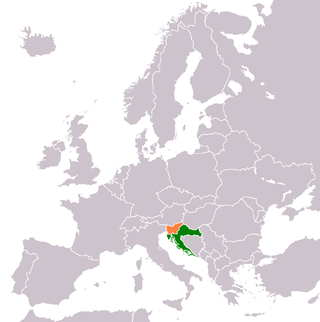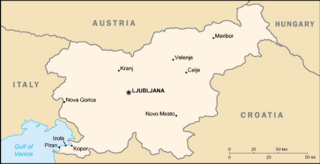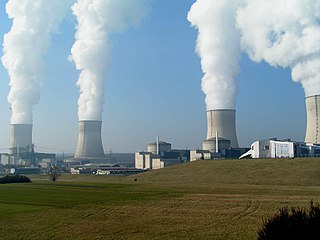Related Research Articles

The Emergency Alert System (EAS) is a national warning system in the United States designed to allow authorized officials to broadcast emergency alerts and warning messages to the public via cable, satellite and broadcast television and AM, FM and satellite radio. Informally, Emergency Alert System is sometimes conflated with its mobile phone counterpart Wireless Emergency Alerts (WEA), a different but related system. However, both the EAS and WEA, among other systems, are coordinated under the Integrated Public Alert and Warning System (IPAWS). The EAS, and more broadly IPAWS, allows federal, state, and local authorities to efficiently broadcast emergency alert and warning messages across multiple channels. The EAS became operational on January 1, 1997, after being approved by the Federal Communications Commission (FCC) in November 1994, replacing the Emergency Broadcast System (EBS), and largely supplanted Local Access Alert systems, though Local Access Alert systems are still used from time to time. Its main improvement over the EBS, and perhaps its most distinctive feature, is its application of a digitally encoded audio signal known as Specific Area Message Encoding (SAME), which is responsible for the characteristic "screeching" or "chirping" sounds at the start and end of each message. The first signal is the "header" which encodes, among other information, the alert type and locations, or the specific area that should receive the message. The last short burst marks the end-of-message. These signals are read by specialized encoder-decoder equipment. This design allows for automated station-to-station relay of alerts to only the area the alert was intended for.

The European Atomic Energy Community is an international organisation established by the Euratom Treaty on 25 March 1957 with the original purpose of creating a specialist market for nuclear power in Europe, by developing nuclear energy and distributing it to its member states while selling the surplus to non-member states. However, over the years its scope has been considerably increased to cover a large variety of areas associated with nuclear power and ionising radiation as diverse as safeguarding of nuclear materials, radiation protection and construction of the International Fusion Reactor ITER.

The International Nuclear and Radiological Event Scale (INES) was introduced in 1990 by the International Atomic Energy Agency (IAEA) in order to enable prompt communication of safety significant information in case of nuclear accidents.

Potassium iodide is a chemical compound, medication, and dietary supplement. It is a medication used for treating hyperthyroidism, in radiation emergencies, and for protecting the thyroid gland when certain types of radiopharmaceuticals are used. It is also used for treating skin sporotrichosis and phycomycosis. It is a supplement used by people with low dietary intake of iodine. It is administered orally.

An emergency population warning is a method where by local, regional, or national authorities can contact members of the public to warn them of an impending emergency. These warnings may be necessary for a number of reasons, including:

The Nuclear Emergency Support Team (NEST), formerly known as the Nuclear Emergency Search Team, is a team of scientists, technicians, and engineers operating under the United States Department of Energy's National Nuclear Security Administration (DOE/NNSA). NEST is the umbrella designation that encompasses all DOE/NNSA radiological and nuclear emergency response functions; some of which date back more than 60 years. NEST's responsibilities include both national security missions, particularly; countering weapons of mass destruction (WMD) and public health and safety, including responses to nuclear reactor accidents. NEST's task is to be "prepared to respond immediately to any type of radiological accident or incident anywhere in the world".
The Health Threat Unit of the Directorate-General for Health and Consumer Protection, is responsible for terrorism surveillance and early warning of biological, chemical, and radiological threats within the European Union. The Health Threat Unit runs the Rapid Alert System, which conducts surveillance on communicable diseases and diseases caused by acts of bioterrorism. The surveillance data are coordinated and evaluated by the Health Emergency Operations Facility. Health threat information and warnings are sent to the member states by the Communication and Crisis Center (BICHAT) and the Security Office in Brussels, Belgium.
The Global Health Security Initiative (GHSI) is an informal international partnership among countries in order to exchange information and coordinate practices for confronting new threats and risks to global health. It was formed to respond to threats of biological, chemical, or radio-nuclear terrorism (CBRN), with pandemic influenza added to the scope a year later.

The Krško Nuclear Power Plant is located in Vrbina in the City Municipality of Krško, Slovenia. The plant was connected to the power grid on October 2, 1981, and went into commercial operation on January 15, 1983. It was built as a joint venture by Slovenia and Croatia which were both part of Yugoslavia at the time.
Ecurie may refer to:
Nuclear power in the European Union accounted for approximately 26% of total electricity production in 2019 and nearly half of low-carbon energy production across the EU.

The foreign relations between Croatia and Slovenia are bound together by shared history, neighboring geography and common political ideologies. Both states established diplomatic relations in 1992, following the dissolution of Yugoslavia and the independence of Croatia. Modern relations are warm and friendly. The two states have disputes over their border and sovereign rights over certain nuclear and economic assets. The countries share 670 km (420 mi) of common border. They are perennially each other's largest trading partners on an import-export basis.
A nuclear power plant emergency response team (ERT) is an incident response team composed of plant personnel and civil authority personnel specifically trained to respond to the occurrence of an accident at a nuclear power plant.
Nuclear energy is used in Slovenia for a number of civilian purposes including electricity production, medicine, and research.

Total primary energy supply (TPES) in Slovenia was 6.80 Mtoe in 2019. In the same year, electricity production was 16.1 TWh, consumption was 14.9 TWh.
The Convention on Early Notification of a Nuclear Accident is a 1986 International Atomic Energy Agency (IAEA) treaty whereby states have agreed to provide notification of any nuclear accident that occur within its jurisdiction that could affect other states. It, along with the Convention on Assistance in the Case of a Nuclear Accident or Radiological Emergency, was adopted in direct response to the April 1986 Chernobyl disaster.
On February 1, 2005, the Emergency Alert System was activated in portions of Connecticut calling for the immediate evacuation of the entire state. The activation was in error. Later studies showed that residents did not evacuate, and that the most common response was to 'change the channel' or seek other confirmation.

On the morning of January 13, 2018, an alert was accidentally issued via the Emergency Alert System and Wireless Emergency Alert System over television, radio, and cellular networks in the U.S. state of Hawaii, instructing citizens to seek shelter due to an incoming ballistic missile. The message was sent at 8:08 a.m. local time and the state had not authorized civil defense outdoor warning sirens to sound.

EU-Alert is the generic term for the European Public Warning Service based upon Cell Broadcast technology.

Nuclear power plants pose high risk to public health and safety if radiation is released into surrounding communities and areas. This nuclear emergency level classificationresponse system was firstly developed by the US Nuclear Regulatory Commission to allow effective and urgent responses to ultimately control and minimise any detrimental effects that nuclear chemicals can have. These classifications come in four different categories – Unusual Event, Alert, Site Area Emergency (SAE), as well as General Emergency. Thus, each classification has differing characteristics and purposes, depending on the situation at hand. Every nuclear power plant has a different emergency response action plan, also depending on its structure, location and nature. They were developed by thorough discussion and planning with numerous authoritative parties such as local, state, federal agencies as well as other private and non-profit groups that are in association with emergency services. Today, nuclear emergency plans are continuously being developed over time to be improved for future serious events to keep communities and nuclear power plant working members safe. There is a high emphasis for the need of these emergency responses in case of future events. Thus, nuclear plants can, and have paid up to approximately $78 million to ensure that are required measurements are readily available, and that equipment is sufficient and safe. This is applicable for all nuclear power plants in the United States of America.
References
- ↑ Answer of Andris Piebalgs to written question of Rebecca Harms of the European Parliament,
- ↑ Council Decision of 14 December 1987 on Community arrangements for the early exchange of information in the event of a radiological emergency. Journal L 371, 30 December 1987 P. 0076 – 0078.
- ↑ Agreement between the European Atomic Energy Community (Euratom) and non-member States of the European Union on the participation of the latter in the Community arrangements for the early exchange of information in the event of radiological emergency (Ecurie) Journal C 102, 29 April 2003 P. 0002 – 0005
- ↑ Slovenian Nuclear Safety Administration website
- ↑ EU issues radiation alert after incident at Slovenian nuclear plant – AFP Archived 6 June 2008 at the Wayback Machine
- ↑ European Community Urgent Radiological Information Exchange (ECURIE) Archived 17 August 2009 at the Wayback Machine at the JRC
- ↑ Bellona: Croatia complains it was kept in the dark after Slovenian reactor incident, while others were told leak was an 'exercise’ Archived 7 August 2011 at the Wayback Machine , 05/06-2008
- ↑ ECURIE ALERT: Belgian nuclear authorities alert the Commission about measures taken after releases of radioactive iodine